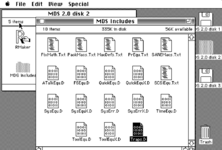Last night, I was reading a book named "
Programmers at Work: Interviews With 19 Programmers Who Shaped the Computer Industry" by Susan Lammers (1986). It contains an
interview with Andy Hertzfeld. What Andy wrote about Bill Atkinson and the LISA was quite interesting, so I will share that part below:
By 1983, Apple knew that the Macintosh was going to happen.
Another unusual thing was that Steve wanted to give credit to the people who actually did the work. The idea came from something that happened when Lisa came out: Lisa had a lot of publicity, and Bill Atkinson had done 110 percent of the important work. He literally created Lisa. But, in articles that came out about the computer, he didn't get credit for it. That was because the Lisa project was as incredibly bureaucratic as the Macintosh project was free and loose. Lisa had a complicated organization, with six levels of management and a hundred programmers. The magazines talked to the manager, and the managers considered themselves the architects of Lisa, even though it was mostly Bill's creation.
Bill felt awful. Something like that had happened to him when he was in college. He did some landmark work, a computer-graphics movie about the brain, which made the cover of Scientific American. The professor he did it for took all the credit, while Bill had done all the work. He was so distraught that he was ready to quit. Apple ended up naming him an Apple fellow to make him happy.
So, Steve Jobs promised us credit for Macintosh.
Most of us know Bill Atkinson's work on the Macintosh and QuickDraw and HyperCard, and while we know Bill worked on the LISA as well, it's the first time I read about the LISA basically being Bill's baby. But the LISA was inseparably tied to its GUI, and Bill Atkinson played a major role in that, so Andy's statement makes a lot of sense when you ponder it.
Bill Atkinson was truly a brilliant fellow.
P.S. If you open
the book on Internet Archive, then Borrow it, then scroll up one page before the article, you'll see a program that Andy wrote called "
IconBounce" which bounces icons around the display (on the Mac). I couldn't find that app anywhere online, not even Macintosh Garden, which indicates it was possibly never released into the wild. But interestingly enough, the book includes the entire Assembly code in its Appendix.
I made screenshots of that ASM code, did clean-up, then converted it to a PDF. I spent a lot of time trying to OCR it properly, but it all was in vain. Shocking how everybody talks about AI taking over the world when no tool that I can will OCR bitmapped source code well. Anyway, to assemble the code, it requires an INCLUDE file required named "
MacTraps.D". I'm guessing "MacTraps.D" must be on version 1.0 of the Macintosh 68000 Development System (MDS from 1985) because
MDSv2 on the Garden has a file named "
Traps.D" on Disk 2...

But the content may differ from "MacTraps.D" in MDSv1.0, which could cause Andy's program to fail to Assemble or fail to execute properly after it's Assembled.
Amusingly,
EBAY has MDS v1 going for $1,000. Sheesh.
FYI:
Macintosh Assembly Language: An Introduction (by Jan Harrington) mentions "MacTraps.D", indicating its content is based on MDS v1.
I've attached the PDF I made of Andy's source code.
Maybe
@David Cook or
@Mu0n might find it interesting.
 www.folklore.org
www.folklore.org

